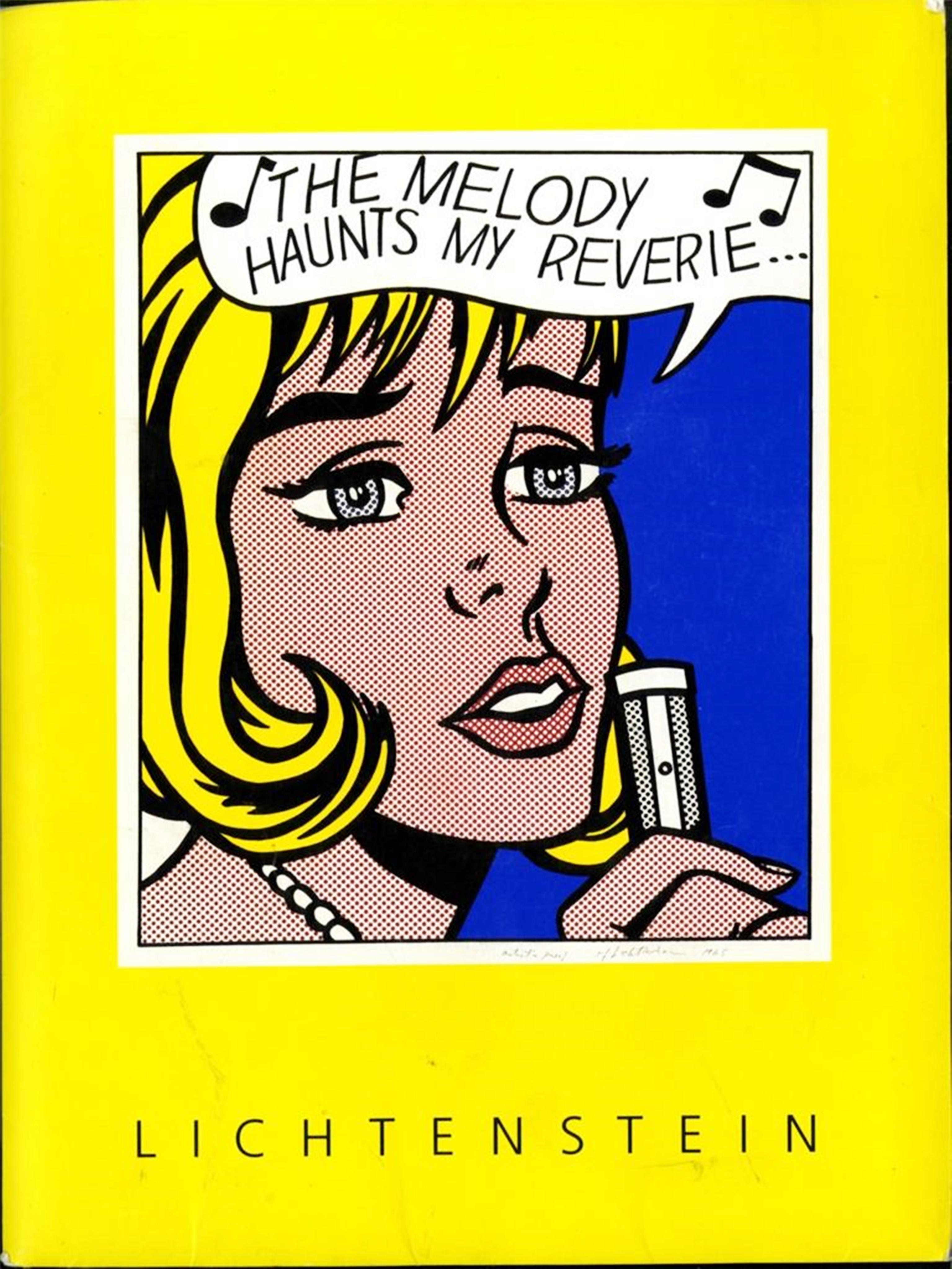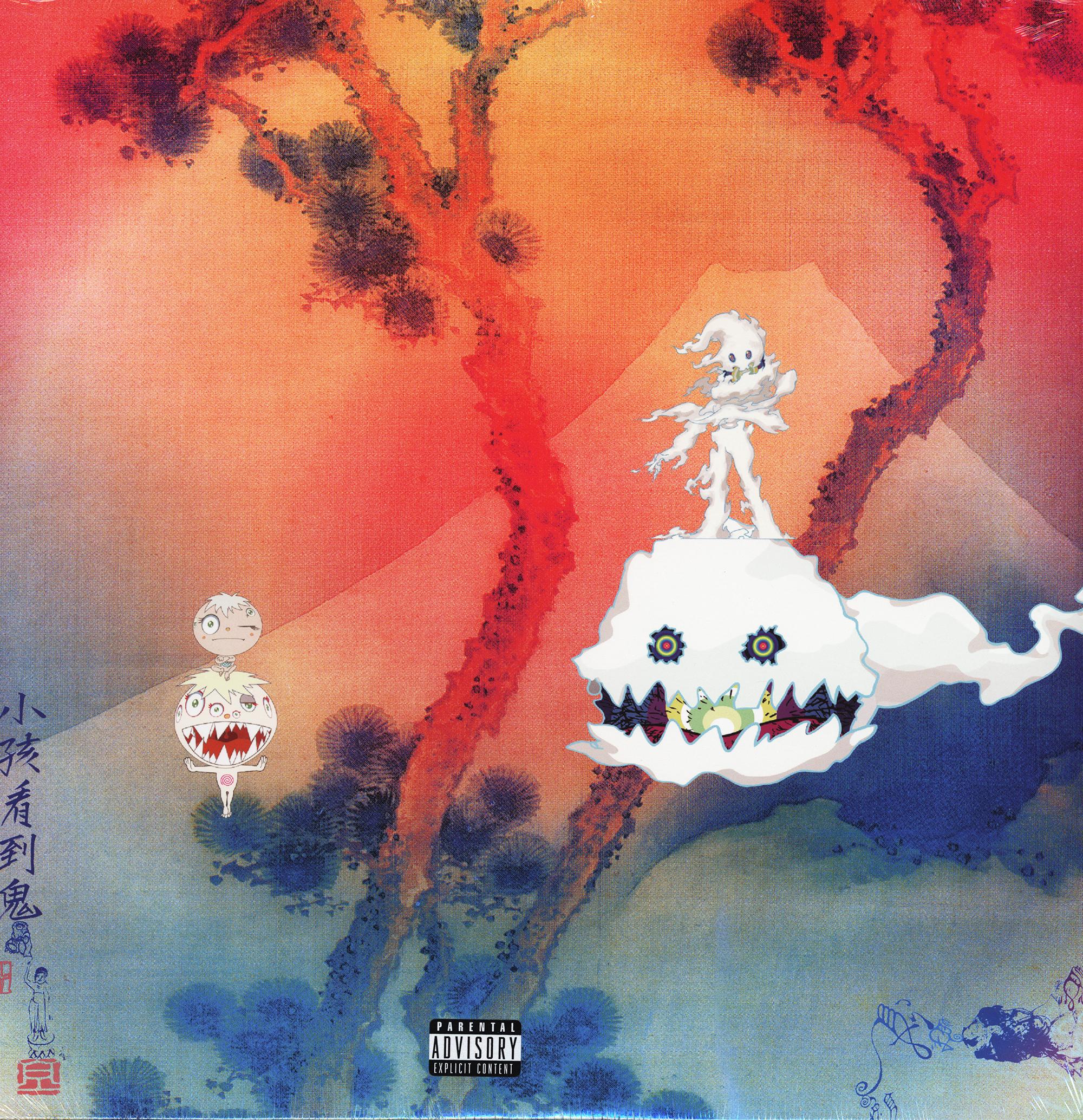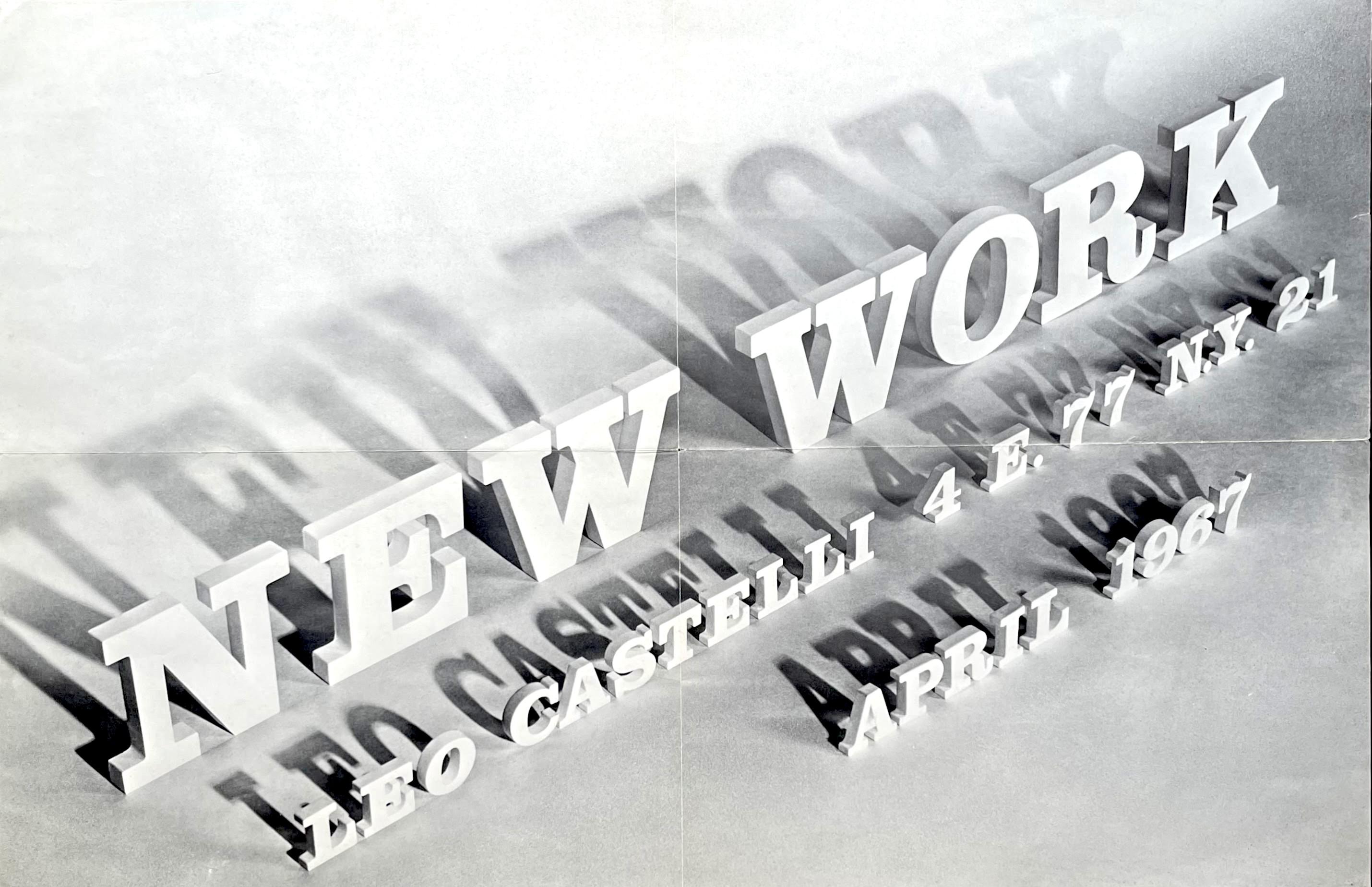James RosenquistVintage James Rosenquist poster MOCA Chicago 1972 neon yellow pink chrome1972
1972
About the Item
- Creator:James Rosenquist (1933, American)
- Creation Year:1972
- Dimensions:Height: 30.25 in (76.84 cm)Width: 22 in (55.88 cm)
- Medium:
- Movement & Style:
- Period:
- Condition:
- Gallery Location:New York, NY
- Reference Number:1stDibs: LU121128024922
James Rosenquist
Although he insisted that he and his fellow Pop artists developed their art-making styles independently, American painter James Rosenquist belonged at the table with Andy Warhol and Roy Lichtenstein.
Known for his distinctive use of visual montage, Rosenquist produced large, vibrantly colored tableaux marked by fragmentation and overlap. He often employed familiar motifs and objects drawn from popular contemporary culture — hot dogs, lipstick tubes, American flags — which he manipulated to form disorienting compositions whose constituent elements are nearly unrecognizable.
Born in North Dakota to Swedish parents, Rosenquist was encouraged to pursue painting by his mother, who was also an artist. He studied painting for two years at the University of Minnesota, but dropped out at the age of 21 to attend the Art Students League in New York on a scholarship. A job as a billboard painter in the late 1950s set him up to pursue his signature style, which borrowed its bold graphics and remixed kitschy aesthetic from the visual vocabulary of advertising. Works like Flamingo Capsule (1983) embody his trademark visual dissonance, drawing cigarette-ad motifs into conversation with stripes from the American flag and aluminum foil wrappers.
In addition to enormous paintings, Rosenquist created drawings, prints and collages. The 2011 lithograph The Memory Continues but the Clock Disappears is a montage of melting clocks and confetti, all submerged in a pool of water. While wryly hinting at the inevitability of decay and deterioration — suggesting that life is a ticking clock — the composition also alludes to Salvador Dalí's signature motif, the defining symbol of Surrealism. Such compositions demonstrate how Rosenquist masterfully combined seemingly incongruous elements into a harmonious and poetic whole.
Find James Rosenquist art today on 1stDibs.
- ShippingRetrieving quote...Ships From: New York, NY
- Return PolicyA return for this item may be initiated within 7 days of delivery.
- Bunraku, James Rosenquist, abstract Japanese puppetry monochrome Pop ArtBy James RosenquistLocated in New York, NYThis abstract monochrome print portrays large, shiny dark purple bubbles that cascade over a scribbled, dense background. The sense of moveme...Category
Late 20th Century Pop Art Abstract Prints
MaterialsLithograph
- 1973 by Mark Lancaster Neon yellow and black British pop art graffitiLocated in New York, NYA dynamic neon-yellow and black Mark Lancaster screen print combining calligraphic paint strokes, paint drips, and smooth, graphic yellow gradients characteristic of the artist's mos...Category
1970s Pop Art More Prints
MaterialsScreen
- Sightseeing (black pull) James Rosenquist text Pop Art in black and whiteBy James RosenquistLocated in New York, NYThis abstract composition features a cropped view of the words SIGHT SEEING, in bold all-capital lettering. Roses fill the top line of text, and the bottom line of text in white is s...Category
1970s Pop Art Abstract Prints
MaterialsLithograph, Screen
- Study for Sculpture in the Form of an Inverted Q Above & Below Ground OldenburgBy Claes OldenburgLocated in New York, NYStudy for Sculpture in the Form of an Inverted Q: Above and Below Ground, 1975 Lithograph, soft-ground etching, and aquatint in six colors on cream, thick, slightly textured Rive BFK paper 14 × 11 in. / 35.2 × 28 cm Signed and dated in pencil, lower right, numbered in pencil, lower left. Edition of 100 with 20 AP. Printed by Bill Law, Winston Roeth and Allan Uglow at Petersburg Press...Category
1970s Pop Art Abstract Prints
MaterialsEtching, Aquatint, Lithograph
- 1-2-3 Outside James Rosenquist pop art muscle car print blue and orangeBy James RosenquistLocated in New York, NY1-2-3 Outside reproduces James Rosenquist’s 1963 oil painting of the same name, collected in the Spencer Museum of Art, The University of Kansas, Lawrence. Rosenquist sourced the ima...Category
1970s Pop Art Abstract Prints
MaterialsLithograph
- Tube James Rosenquist Black and white abstract Pop art chrome based on paintingBy James RosenquistLocated in New York, NYPrinted in the same scale as the original James Rosenquist painting, this black and white, abstract pop art composition features a car door collaged over a gleaming, metallic chrome circle. The shining metal and automobile imagery is characteristic of Rosenquist’s work. Bold, minimalist and monochrome, with a hint of yellow and cobalt blue, Tube's circular composition became a recurring motif for Rosenquist. Circles appear in the artist’s prints from the late 60s – he was interested in the “circles of confusion”, or the phenomenon of a camera lens being pointed directly at the sun. Lithograph based on Rosenquist’s 1963 painting...Category
Late 20th Century Pop Art Abstract Prints
MaterialsLithograph
- As I Opened Fire Poster, TriptychBy (after) Roy LichtensteinLocated in New York, NYSet of 3 color offset lithographs. The last panel is signed in pencil. Printed by Drukkerij Luii & Co., Amsterdam. Published by the Stedelijk Museum, Amsterdam. This is a reproductio...Category
1960s Pop Art Abstract Prints
MaterialsColor, Lithograph, Offset
- Vintage Museum Press Kit (National Gallery, LACMA & Dallas Museum)By Roy LichtensteinLocated in New York, NYRoy Lichtenstein Vintage Museum Press Kit (National Gallery, LACMA & Dallas Museum), 1994 -1995 Offset Lithograph brochures, press releases, magazines and a bookmark 12 x 9 inches Un...Category
1990s Pop Art Abstract Prints
MaterialsLithograph, Offset
- Limited Ed. St. Louis Art museum poster Hand Signed & dated by Roy LichtensteinBy Roy LichtensteinLocated in New York, NYRoy Lichtenstein 1970-1980 (Hand Signed and dated by Roy Lichtenstein), 1981 Offset lithograph. Hand signed and dated in ink Hand-signed by artist, H...Category
1980s Pop Art Abstract Prints
MaterialsInk, Lithograph, Offset, Pencil, Graphite
- Takashi Murakami record art 2018 (Takashi Murakami Kanye West)By Takashi MurakamiLocated in NEW YORK, NYTakashi Murakami Record Art 2018 (Takashi Murakami Kanye West Kid Cudi): This Takashi Murakami designed cover & record album is for Kids See Gh...Category
21st Century and Contemporary Pop Art Abstract Prints
MaterialsPaper, Offset
- Canadian Post Modern Pop Art Lithograph Vintage Poster Memphis Galerie MaeghtBy Jean-Paul RiopelleLocated in Surfside, FLVintage gallery exhibition poster. The Galerie Maeght is a gallery of modern art in Paris, France, and Barcelona, Catalonia, Spain. The gallery was founded in 1936 in Cannes. The Paris gallery was started in 1946 by Aimé Maeght. The artists exhibited are mainly from France and Spain. Since 1945, the gallery has presented the greatest modern artists such as Matisse, Bonnard, Braque, Miró, and Calder. In 1956, Adrien Maeght opened a new parisian venue. The second generation of “Maeght” artists was born: Bazaine, Andre Derain, Giacometti, Kelly, Raoul Ubac, then Riopelle, Antoni Tapies, Pol Bury and Adami, among others. Jean-Paul Riopelle, CC GOQ (7 October 1923 – 12 March 2002) was a painter and sculptor from Quebec, Canada. He became the first Canadian painter (since James Wilson Morrice) to attain widespread international recognition. Born in Montreal, Riopelle began drawing lessons in 1933 and continued through 1938. He studied engineering, architecture and photography at the école polytechnique in 1941. In 1942 he enrolled at the École des beaux-arts de Montréal but shifted his studies to the less academic école du Meuble, graduating in 1945. He studied under Paul-Émile Borduas in the 1940s and was a member of Les Automatistes movement. Breaking with traditional conventions in 1945 after reading André Breton's Le Surréalisme et la Peinture, he began experimenting with non-objective (or non-representational) painting. He was one of the signers of the Refus global manifesto. In 1947 Riopelle moved to Paris and continued his career as an artist, where, after a brief association with the surrealists (he was the only Canadian to exhibit with them) he capitalized on his image as a "wild Canadian". His first solo exhibition took place in 1949 at the Surrealist meeting place, Galerie La Dragonne in Paris. Riopelle married Françoise Lespérance in 1946; the couple had two daughters but separated in 1953. In 1959 he began a relationship with the American painter Joan Mitchell, Living together throughout the 1960s, they kept separate homes and studios near Giverny, where Monet had lived. They influenced one another greatly, as much intellectually as artistically, but their relationship was a stormy one, fueled by alcohol. The relationship ended in 1979. His 1992 painting Hommage à Rosa Luxemburg is Riopelle's tribute to Mitchell, who died that year, and is regarded as a high point of his later work. Riopelle's style in the 1940s changed quickly from Surrealism to Lyrical Abstraction (related to abstract expressionism), in which he used myriad tumultuous cubes and triangles of multicolored elements, facetted with a palette knife, spatula, or trowel, on often large canvases to create powerful atmospheres. The presence of long filaments of paint in his painting from 1948 through the early 1950s[8] has often been seen as resulting from a dripping technique like that of Jackson Pollock. Rather, the creation of such effects came from the act of throwing, with a palette knife or brush, large quantities of paint onto the stretched canvas. Riopelle's voluminous impasto became just as important as color. His oil painting technique allowed him to paint thick layers, producing peaks and troughs as copious amounts of paint were applied to the surface of the canvas. Riopelle, though, claimed that the heavy impasto was unintentional: "When I begin a painting," he said, "I always hope to complete it in a few strokes, starting with the first colours I daub down anywhere and anyhow. But it never works, so I add more, without realizing it. I have never wanted to paint thickly, paint tubes are much too expensive. But one way or another, the painting has to be done. When I learn how to paint better, I will paint less thickly." When Riopelle started painting, he would attempt to finish the work in one session, preparing all the color he needed before hand: "I would even go as far to say—obviously I don't use a palette, but the idea of a palette or a selection of colors that is not mine makes me uncomfortable, because when I work, I can't waste my time searching for them. It has to work right away." A third element, range of gloss, in addition to color and volume, plays a crucial role in Riopelle's oil paintings. Paints are juxtaposed so that light is reflected off the surface not just in different directions but with varying intensity, depending on the naturally occurring gloss finish (he did not varnish his paintings). These three elements; color, volume, and range of gloss, would form the basis of his oil painting technique throughout his long and prolific career. Riopelle received an Honorable Mention at the 1952 São Paulo Art Biennial. In 1953 he showed at the Younger European Painters exhibition at the Solomon R. Guggenheim Museum in New York City. The following year Riopelle began exhibiting at the Pierre Matisse Gallery in New York. In 1954, works by Riopelle, along with those of B. C. Binning and Paul-Émile Borduas represented Canada at the Venice Biennale. He was the sole artist representing Canada at the 1962 Venice Biennale in an exhibit curated by Charles Comfort...Category
1970s Pop Art Abstract Prints
MaterialsLithograph, Offset
- Leo Castelli Gallery poster (Roy Lichtenstein, Frank Stella, John Chamberlain)Located in New York, NYRare collectors item: Roy Lichtenstein, Frank Stella, John Chamberlain New Work, Leo Castelli poster, 1967 Offset lithograph poster invitation with original folds, addressee and post...Category
1960s Pop Art Abstract Prints
MaterialsOffset, Lithograph





